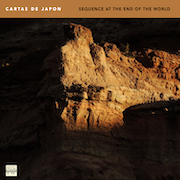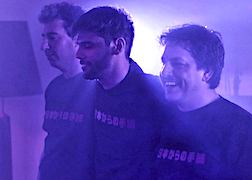|
It will be hard to pick a favorite moment from Sequence at the End of the World (38'12"). Under the name Cartas de Japón sound seekers Lucas Tripaldi, Pablo Bilbao and Esteban Menash realize an exquisitely detailed Electronic Music. Building monumental musical structures from layers of mechanized patterns these elegantly virtuosic sequencer-smiths bring out feelings of certainty, possibility and potential in their listeners. While warmly singing synths poised above cleanly articulated bass notes may represent the mechanics of the mind, this album's questing melodic lines bestow a heightened sensitivity to the promises of life. The intense expressiveness this trio exhibits throughout Sequence at the End of the World shows that they are not afraid to think big thoughts and make big statements, all while leisurely pondering the cosmos. As the rising and falling rhythmic chug of broken chords ring through space, we follow a smoothly curving arc of restless ever-shifting keys and moods. An ethereal Mellotron flute floats by lithely, and is met by full-bodied keyboard leads amidst steadily pulsing iambic rhythm - the charged twinkling arrangements greeting us brightly in their winning arrangement and vision. In the headlong drive of spiraling, electric glides ratcheting notes accent the striding motor-motion of ardent echoing tones. Resounding a range of resonances the seven tracks dance through time. Sequence at the End of the World lends sonic energy to the language of ideas, which leads the players and their audience to find a special fortitude in this work. Its hopefulness can be traced back to the beginnings of the Spacemusic genre, which remains a music for a future that never arrived. Every effort to invent the future reveals something about who we are today. While we cannot know what our tomorrow will be, someplace in this enchanted release is the idea that will change everything - if we could but hear it.
Chuck van Zyl/STAR'S END - 1 April 2021
|



